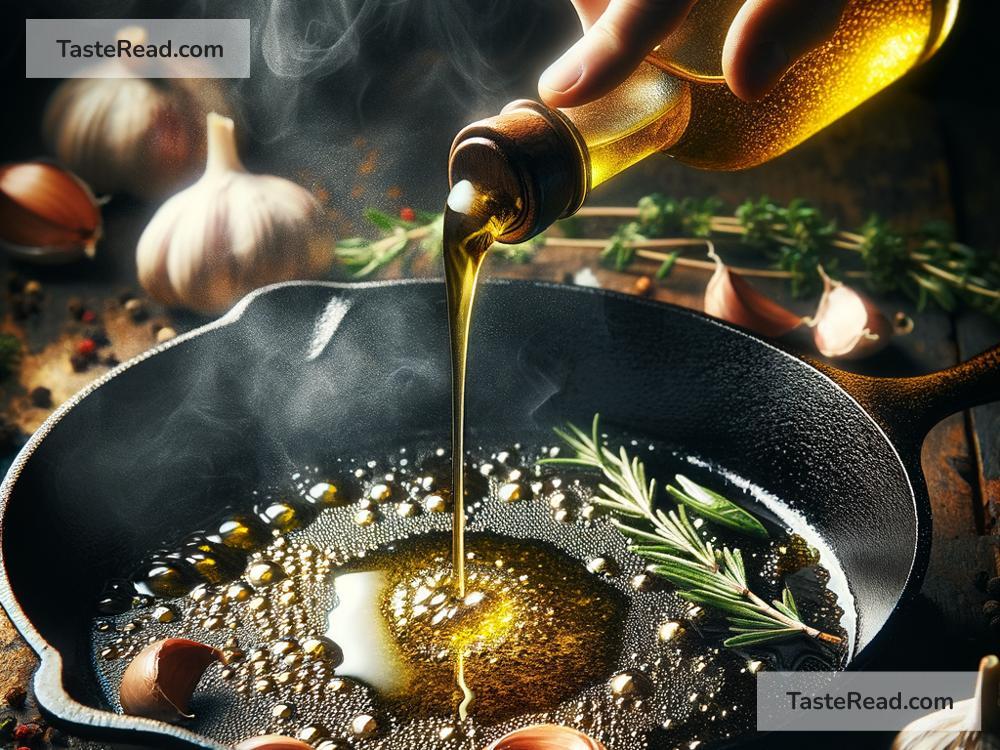The Science of Cooking with Fat: Techniques and Tips
Cooking can feel like magic sometimes. You take a handful of ingredients, mix them together, apply heat, and suddenly you have a delicious meal. But underneath the magic lies science, and one of the most important players in the science of cooking is fat. Whether it’s butter, olive oil, lard, or coconut oil, fat is an essential ingredient in creating flavor, texture, and aroma. In this blog, we’ll explore the science of cooking with fat, techniques to get the best results, and tips to elevate your dishes.
What Is Fat in Cooking?
Fat comes from both plants and animals. It can be solid at room temperature, like butter or lard, or liquid, like olive oil or vegetable oil. Fat is more than just a way to keep food from sticking to your pan—it’s an essential part of cooking. It influences how food tastes, smells, and feels.
From frying potatoes to creating creamy sauce, fat acts as a flavor carrier, a heat conductor, and sometimes even a textural component. Not all fats work the same way in the kitchen, so understanding their properties can help you cook better food.
The Science Behind Fat’s Role in Cooking
- Enhanced Flavor
Fat doesn’t just taste good on its own—it absorbs, transfers, and enhances flavors. Ever noticed how a French fry tastes better than a boiled potato? That’s because the hot oil makes the potato golden and crispy while deepening its flavor. Fat also carries aroma molecules, making food smell irresistible.
Butter, for example, contains water, milk solids, and fat—and all three work together to add richness to baked goods or sauces. Oils like sesame or olive oil add their own distinct flavors to dishes, making them unique.
-
Heat Conductor
Fat is amazing at transferring heat evenly. This is why we use butter or oil to fry eggs or pan-sear meat. When cooking something high-temperature, fat allows the heat to penetrate the surface slowly and evenly, helping your dishes brown and turn crispy without burning. -
Texture Maker
Fat can make food creamy, crispy, or flaky, depending on how you use it. Adding cream to soup leads to a velvety finish. Frying chicken in oil makes the skin crispy. Meanwhile, pie crust gets its flaky layers by incorporating shortening or butter. -
Leavening and Moisture
In baking, fats like butter and shortening trap air when beaten together with sugar. This air expands during baking, leading to light, fluffy cakes. Fat also locks in moisture, ensuring baked goods stay tender rather than dry.
Types of Fats and Oils in Cooking
Understanding the different types of fat can help you decide which one to use in your recipes. Here’s a quick guide:
- Animal-Based Fats
- Butter: Adds richness to baked goods, sauces, and pan-fried foods.
- Lard: Makes pastries extra flaky and golden.
-
Duck Fat: Perfect for frying and roasting vegetables to make them rich and savory.
-
Plant-Based Oils
- Olive Oil: Amazing for salads, sautés, and drizzling over finished dishes.
- Coconut Oil: Solid at room temperature; frequently used in baking and frying. Adds a tropical or nutty flavor.
-
Vegetable Oil: Neutral and versatile, suitable for frying, baking, and cooking.
-
Specialty Oils
- Sesame Oil: Intense, nutty flavor. Great for Asian dishes.
- Avocado Oil: Mild taste with a high smoke point, ideal for cooking and frying.
Techniques for Cooking with Fat
-
Searing and Frying
These techniques rely on fat’s ability to conduct heat. When searing meat, use an oil with a high smoke point like vegetable oil or avocado oil. This prevents the oil from burning while creating a tasty crust. For frying, use enough fat to fully submerge food for even cooking. -
Adding Creaminess
Want to make soups and sauces indulgently creamy? Try whisking butter into your dish toward the end of cooking. If making pasta, toss it with olive oil or melted butter for a silky texture. -
Basting
Basting involves spooning fat over food while it cooks. It’s commonly used in roasting, especially for meats. Melted butter or oil keeps the surface moist and flavorful while helping it brown evenly. -
Making Pastry
For flaky pies and biscuits, use cold fat. When butter or shortening stays solid in the dough, it creates layers as it melts during baking, resulting in a buttery, flaky texture. -
Building Flavor
Many recipes start with sautéing onions or garlic in fat. This step, called flavor building, uses fat to create a base layer of deliciousness that’ll carry through the rest of the dish.
Tips for Using Fat Effectively
-
Choose the Right Fat
Different fats have different smoke points—the temperature at which they start to burn. Use oils with high smoke points like peanut or avocado oil for frying, and delicate oils like extra virgin olive oil for salad dressings. -
Don’t Overuse
Fat is powerful, so a little goes a long way. Adding too much can overpower other flavors or make dishes greasy. -
Keep It Fresh
Oils can go rancid over time, so store them properly and check expiration dates. -
Experiment
Don’t be afraid to try different fats and oils in your cooking. Each one brings its own personality to a dish. For example, frying eggs in butter tastes indulgent, but frying them in olive oil gives a lighter flavor.
Conclusion
Cooking with fat is both an art and a science. By understanding its properties and role in cooking, you can create meals that are bursting with flavor, texture, and aroma. Whether you’re frying, roasting, or baking, fat is the magic ingredient that makes food irresistible. So, grab your favorite butter, oil, or shortening, and start experimenting in the kitchen. You might just discover your new favorite dish!


